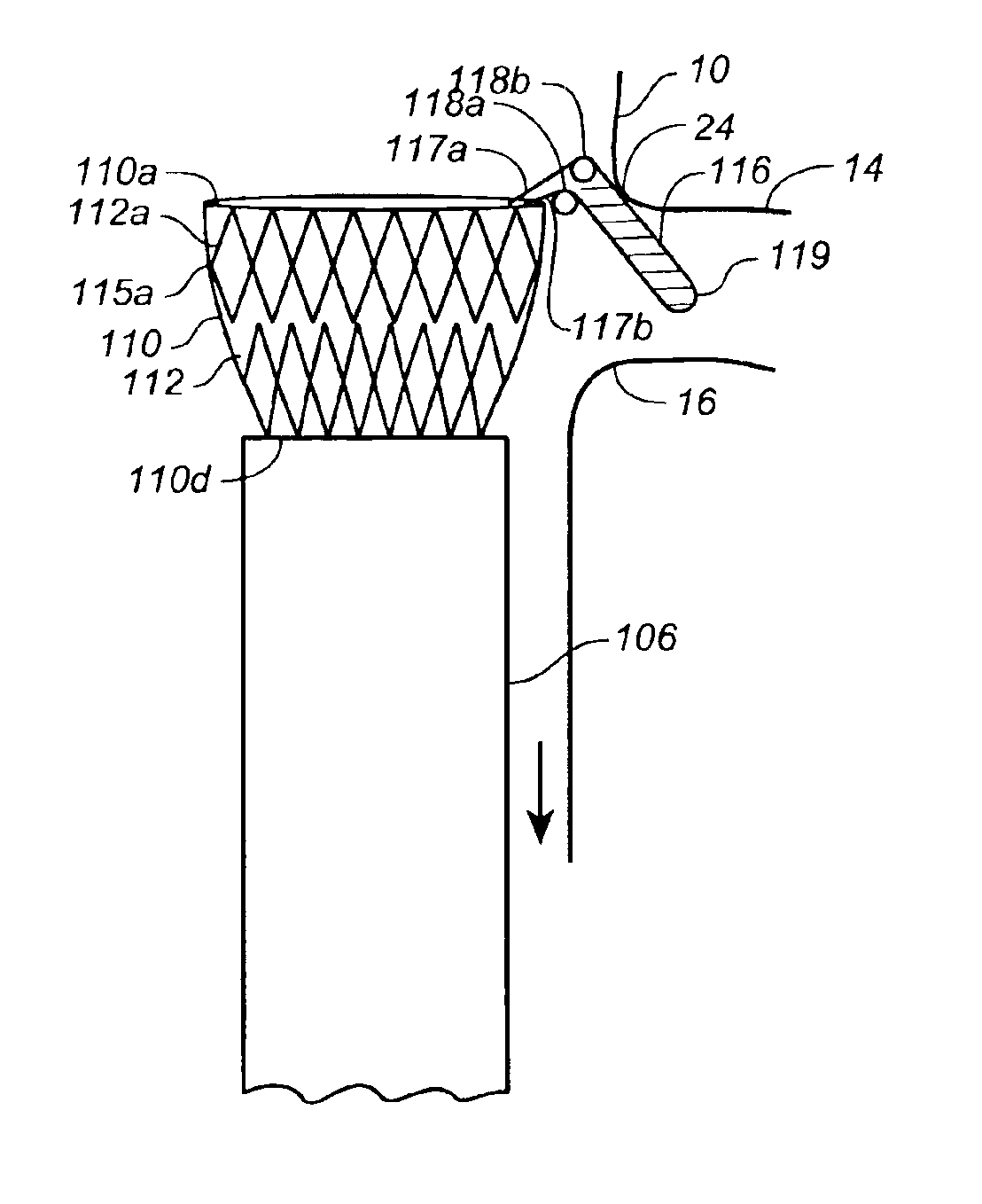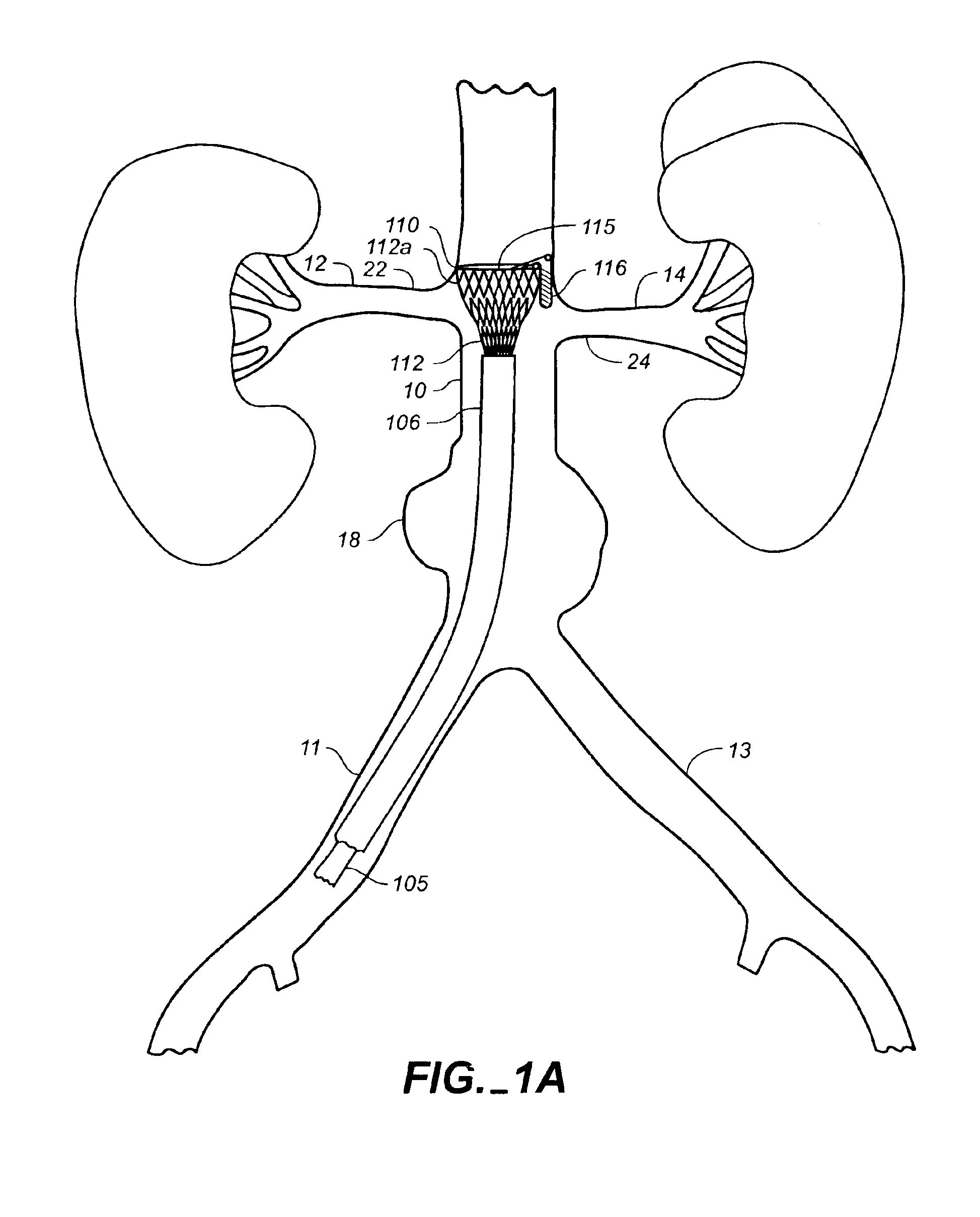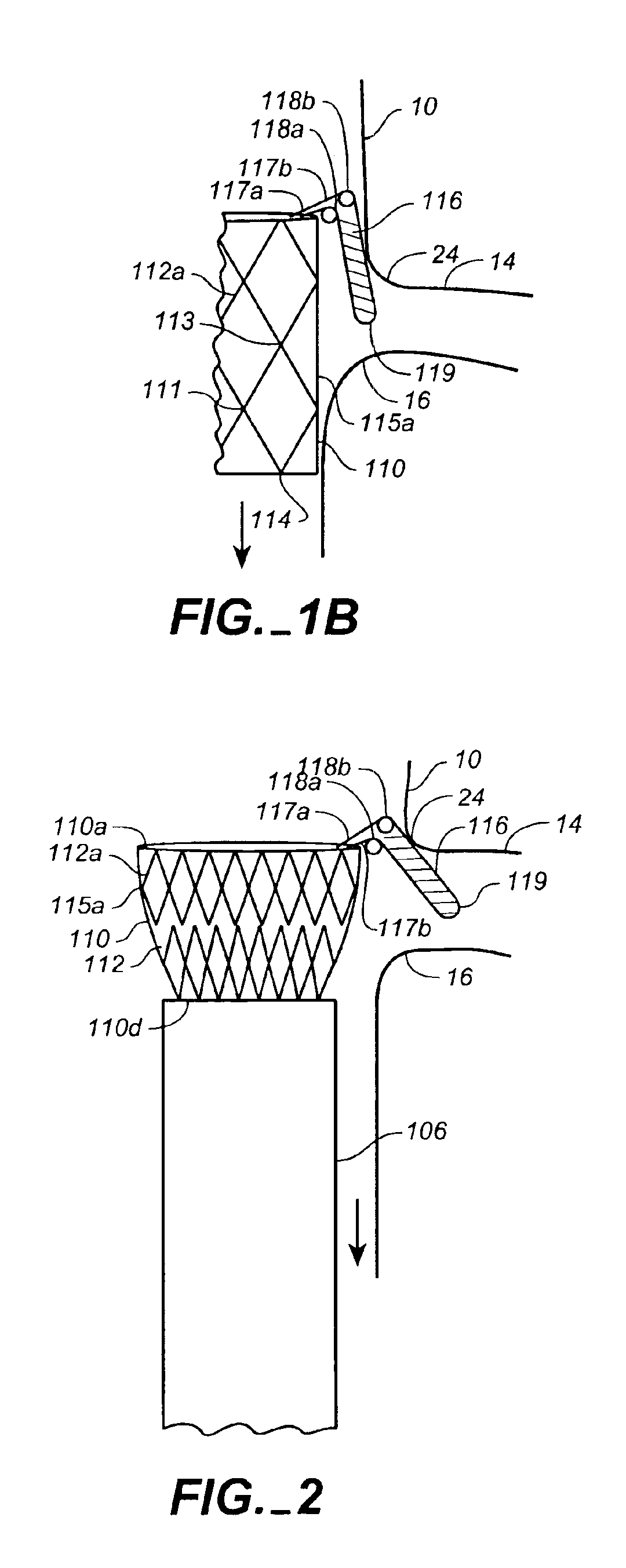[0009]An embodiment according to the present invention provides an endoluminal prosthesis with an improved fixation
system for deploying the endoluminal prosthesis within a body lumen and reducing distal migration of the prosthesis. The fixation system comprises at least one laterally extending member or finger member extending from a portion of a prosthesis, where the finger member is to be deployed within a proximal
branch lumen. The finger member may be incorporated into the main prosthesis or may be included with a modular portion of the prosthesis such as a short
cuff that is initially deployed within the body lumen, with the longer main prosthesis subsequently fixed to the
cuff. The finger member is configured to be non-piercing or relatively atraumatic to tissue. The finger member may be a self-expanding so that it tends to open or extend laterally when not constrained. In one embodiment, the finger member extends laterally at about 90 degrees from the prosthesis.
[0010]In one embodiment a modular fixation device or
cuff is provided with at least one intraostial finger member. The cuff is configured for
initial fixation to a lumen wall. A longer endoluminal prosthesis is provided and is coupled to the cuff to bypass a diseased portion of the
anatomy. The cuff may provide a more reliable
landing zone for the prosthesis and a more predictable, consistent engagement area, while the finger further prevents distal migration of the cuff. In one embodiment, the cuff comprises one or more support structures and a graft material surrounding at least a portion of a support structure. The cuff is arranged to engage the inner lumen wall at a fixation site and form a leak resistant seal with the inner wall of the body lumen. The finger member when deployed extends laterally from the sidewall of the tubular member and into the
branch vessel.
[0014]The annular support members each comprise an annular expandable member formed by a series of connected compressible
diamond structures. The finger member is preferably coupled to the proximal most annular support member and may be integrally formed therewith so that it extends about 1 or 2 millimeters above the renal
ostium, which is not to be blocked by the prosthesis. Alternatively, for example, the expandable member may be formed of an undulating or sinusoidal-like patterned wire ring or other compressible spring member. Preferably the annular support members are radially compressible springs biased in a radially outward direction, which when released, bias the prosthesis into conforming fixed engagement with an interior surface of the vessel. Annular support members are used to create a seal between the prosthesis and the inner wall of a body lumen, as well as to support the tubular graft structures. The annular springs are preferably constructed of Nitinol. Examples of such annular support structures are described, for example, in U.S. Pat. Nos. 5,713,917 and 5,824,041 incorporated herein by reference. When used in an
aneurysm exclusion device, the springs have sufficient radial
spring force and flexibility to conformingly engage the body lumen inner wall to avoid excessive leakage, and prevent pressurization of the aneurysm, i.e., to provide a leak resistant seal. Although some leakage of blood or other
body fluid may occur into the aneurysm isolated by the prosthesis, an optimal seal will reduce the chances of aneurysm pressurization and the possible resulting rupture. The annular support members are attached or mechanically coupled to the graft material along the tubular graft by various means, such as, for example, by stitching onto either the inside or outside of the tubular graft.
[0018]A guide wire may be initially inserted through the
femoral artery to the
aorta and into the
renal artery where the finger of the prosthesis is to be deployed. This may assist in locating the distal end of the sheath at the
ostium of the
renal artery where the finger member of the prosthesis is to be deployed Once appropriately located, a sheath on the
catheter covering or restraining the prosthesis is retracted to release the finger member. Once the finger member is appropriately located in the ostium, the sheath may be further retracted releasing the prosthesis, allowing the annular springs to expand and attach or engage the prosthesis to the inner wall of the body lumen. Alternatively, the prosthesis may be positioned and released with the finger member slightly above the ostium. The finger member expands when released and may be constrained to some extent by the inner wall of the lumen. The free end of the finger member is located at the ostium of a
branch vessel by drawing the prosthesis distally until the finger member is located in the ostium. Once the finger member is in position, the prosthesis may be fully deployed and released from the
catheter. A marker may be placed on the prosthesis so that the circumferential orientation of the finger member may be determined for positioning it at the ostium of the side or
branch vessel.
 Login to View More
Login to View More  Login to View More
Login to View More 


